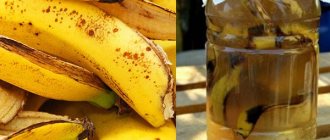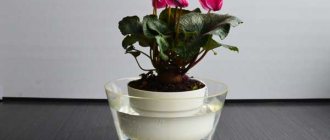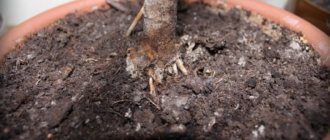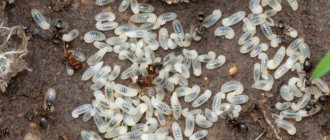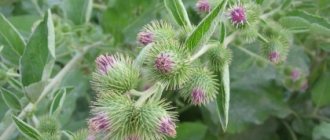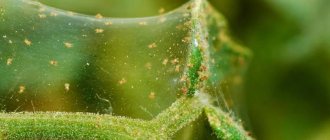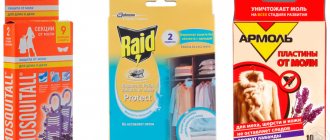Modern gardeners try to use inexpensive, but at the same time effective and environmentally friendly means in their practice to support the immunity of indoor plants and treat them from various diseases. Recently, the question has increasingly arisen: is it possible to water indoor flowers with an infusion of onion peels? Experts say that it is not only possible, but also necessary. However, it is important to know some rules and features of using this tool. In addition, it is not suitable for all plants.
For which plants is onion peel suitable as fertilizer?
Fertilizing with onion peels is suitable for almost all plants. It is especially useful for peppers, potatoes, cucumbers and tomatoes. After its use, they begin to develop better, bloom and bear fruit profusely. In the article about choosing fertilizer for potatoes, we have already touched on fertilizing with onion peels.
In addition to garden crops, it is used to care for house plants. It helps indoor plants survive in difficult living conditions.
Beneficial features
There are several beneficial properties of onion peel. And it’s difficult to single out the main one.
- One of them is the fight against fungal diseases, various pathogenic bacteria and rot. Onion peel prevents them from spreading and developing. Reduces fungal growth. Has a disinfecting effect.
- The second is to improve the condition of the plant’s root system and, in connection with this, its strengthening and development. It prevents rotting. Prevents the early process of chlorophyll decay and participates in photosynthesis.
- Third, maintaining the plant’s immunity. Stimulates the plant's defenses, thus increasing the plant's resistance to adverse environmental factors. Participates in redox processes. Helps in the conversion of nitrogen and sulfur, and saturation with phosphorus. It is the strongest antioxidant.
Fertilizing with onion peels is well suited for indoor plants that grow in polluted air.
Spraying helps fight various insect pests: aphids, codling moths, mites, mole crickets, cabbage butterflies and others.
Composition of onion peel
It is generally accepted that carrots are a source of carotene. Yes, humans get this vitamin from it, but for plants it can be extracted from onion peels. There is quite a lot of it in it.
In addition, it contains:
- phytoncides,
- nicotinic acid,
- ascorbic acid,
- quercetin.
These elements are difficult to find in such quantities and ratios in other plant-based supplements. The husk also contains vitamins of group B and group PP, which have various positive effects on plant growth.
In addition to plants, fertilizing with onion peels has a healing effect on the soil.
How to cook
Onion peels are used in different ways: they make decoctions and infusions from it, and mulch plants. To do this, be sure to properly prepare the raw materials.
The husks are collected only from the top of the onion; they must be dry and free of mold. Place in a cotton bag or cardboard box and place in a ventilated area. This is a mandatory factor for storing husks, because among all the scales there may be fresh ones that have not yet dried. In a room without ventilation, it will begin to rot and ruin the entire collection of husks.
Decoctions
There are several types of decoctions.
Decoction of onion peels as fertilizer for plants
Here are a few of them:
- Pour a glass of husk with two liters of water, bring to a boil and cook for 4-5 minutes. During cooking, all useful substances are released from the husk and enter the water. Then cool and water the garden. The broth does not need to be filtered. The husks still contain some nutrients and can serve as mulch for plants. Don't be afraid that it will rot. There are still enough tannins and phytoncytes left in it to prevent this.
- This version of the decoction is suitable not only for watering, but also for spraying leaves. Fill a glass of husk with two liters of water, bring to a boil and cook for several minutes. Then the pan is wrapped so that the broth cools as slowly as possible. Some gardeners use a thermos for these purposes. After the broth has cooled, it turns dark brown. It is diluted in a bucket of water, otherwise it turns out very rich. And in this form the plants are sprayed. But no more than 2 times a month - the decoction is too strong.
Husk infusions
The difference between an infusion and a decoction is that the onion peel is not boiled, but filled with water and left to stand for several days.
There are several recipes for infusions.
- Pour a glass of husk into a bucket of water and leave for four days in a warm room. Then spray it on fruit trees and shrubs. The husk itself, as well as the husk from decoctions, can be used as mulch.
- Half a bucket of husks is poured with boiling water to the brim and left to steep for two days. Then it is filtered and sprayed on plants against various pests. Such as aphids and mites. In addition to getting rid of insects, such spraying will help prevent fungal infections.
- A glass of husks and 20 grams of onions are poured with boiling water and left for 9 hours. After straining, the stems and leaves of plants are sprayed with infusion to prevent insects.
Onion peel mulch
Mulching with onion peels is useful because, due to its properties, the peels repel all pests from the roots of the plant. And after watering, it begins to release its beneficial substances into the soil, thereby not only preventing various diseases of the plant roots, but also enriching it.
Another option is to scatter the husks on the surface of the bed a few days before planting the plants and dig them up. Then they water it a little so that the husk begins to give its beneficial properties to the earth. And after 2-3 days, plants are planted in the garden bed.
This recipe is suitable for those who do not have time to prepare decoctions and infusions and is similar to the previous one. There is no need to cook or dilute anything. The recipe is simple but effective. Onion peels are scattered over the garden bed and sprinkled with soil. Then water it periodically. Thus, the husk slowly releases its beneficial substances to the earth.
Husk decoction recipe
In order to prepare a decoction for indoor and country flowers, it is best to take both onion and garlic peels (the proportions are arbitrary, approximately 1:1). Two handfuls of raw materials are poured with three liters of hot water in an enamel pan, covered with a lid and boiled over very low heat for about 8 minutes. The composition, infused for two hours, is filtered, poured into a spray bottle and the flowers are given a kind of shower. It makes sense to water the soil with a decoction if midges have multiplied in the pots, there are other insects, or the soil is covered with mold (moss).
Water the ground with the broth for the purpose of preventive disinfection.
A decoction of garlic and onion peels is used for foliar feeding of plants once every few months (more often in summer, less often in winter).
More on the topic:
Eco-friendly garden pest control products
Biological methods of cabbage pest control
The fight against the Colorado potato beetle: “biological weapons”
Keep this method of disinfecting soil and treating indoor flowers in memory, so that if your green pets suddenly begin to wither for no reason, immediately use an effective remedy, especially since husks are always found in any kitchen in fairly large quantities.
The prepared decoction cannot be saved, since most of the active compounds are destroyed after a few hours, so prepare a portion of the liquid at a time. Peace to your home!
Author: Mila Nabogova
Photo: flickr.com
Onion peels can saturate the soil with environmentally friendly substances beneficial to plants and at the same time protect them from diseases and pests.
Onion peel as a fertilizer is economical, effective, safe and useful for vegetable and garden crops, as well as for house flowers. For these purposes, onion peel is used not only in its pure form, but as a raw material for infusions and decoctions.
Properties of onion peel
the biologically active it contains , including:
- B vitamins help strengthen seeds, seedlings and adult plants and fruits, accelerate their germination and growth,
- vitamins of the PP group (nicotinic acid) ensure the complete absorption of nitrogen and sulfur by plants, strengthening of oxidative processes in plants, normalization of the development of plants, their root system and fruits in any growing conditions;
- Vitamin E protects against rot and strengthens plants;
- carotene - thanks to its powerful antioxidant, nutritional, immunostimulating and disinfecting properties, it allows you to successfully fight plant diseases, achieve improved germination of seeds and seedlings, and in indoor, garden and garden plants it increases resistance to various diseases;
- quercetin, a known antioxidant with anti-inflammatory and antioxidant properties;
- microelements, including boron, iron, magnesium, manganese, copper, contribute to the resistance of garden and vegetable crops to diseases and increase their yield;
- phytoncides successfully fight plant diseases caused not only by microorganisms, but also by bacteria, rot and fungi.
Using onions in the garden
Today we will look at the beneficial properties of onion peels for:
- tomatoes;
- cucumbers;
- indoor flowers and more
Onion peels for tomatoes
Dry onion “skins” help increase the yield of tomatoes, strengthen the root system and stems, and protect against various types of diseases.
To use the nutritional and healing properties of the husk, it is used several times during the life of the plant.
For the first application, onion fertilizer is prepared in the first days after planting the seedlings. To prepare the nutritional composition, pour two glasses of husks into a liter of boiling water. To obtain working fertilizer, the infusion is kept for two days in a cool shaded or dark place.
To use the infusion is diluted with clean water in a ratio of one to three and half a liter is added to each young plant. For one-month-old plants, one and a half liters of solution is poured into the hole near the trunk. The effect of the fertilizer will appear after three to four days, when the tomato bushes become noticeably stronger and all the leaves turn green.
The second time the tomatoes are fed during flowering. In the evening, the infusion prepared as described above is poured under the roots of the bushes.
Thanks to this procedure, infection with fungus and rot is simultaneously prevented.
Regular watering is carried out the next day.
Onions for cucumbers
The first treatment is carried out by preparing the soil for planting cucumbers . To do this, the husk itself is crushed and added dry to the beds when they are first dug. You can also add the prepared decoction along with the boiled husks.
Proportions - three liters of husk and/or solution per square meter. Such pre- treatment of the beds will significantly reduce the risk of seedlings becoming infected with mold and rot.
The following processing and feeding is carried out when planting cucumber seeds using a strong decoction according to the above recipe. To protect and strengthen the plants throughout the entire growth period, the process is repeated several times, starting from the emergence of seedlings. The composition is prepared according to the recipe described above, watering the plants themselves and spraying the above-ground part.
Fertilizing plants with infusion of onion peels
The infusion will improve the soil structure, enrich it with microelements and nutrients. To prepare it, take a liter jar tightly filled with husks. Fill this volume with eight liters of boiling water.
This can be done in three stages if there is no suitable container. Cover the container with a lid and set aside for 24 hours. For direct treatment of plants and fertilizing, dilute the infusion at a rate of one to five. Water and spray plants, including zucchini, potatoes, cucumbers, peppers and tomatoes.
Feeding plants with a decoction of onion peels
A decoction is used to feed and process zucchini, including zucchini, potatoes, squash, pumpkin and the like. For use, it is most convenient to prepare a concentrated decoction in advance, which can be diluted for watering and spraying as needed.
To do this, take husks and clean water in the following proportions: one and a half to two liters of boiling water per glass of raw material. The mixture is brought to a boil and left to infuse and cool under the lid.
The resulting concentrate is poorly stored, losing its healing and nutritional properties, so it is recommended to use it immediately, diluting it as needed at the rate of two liters of concentrated decoction per ten liters of warm water (one standard galvanized bucket filled to the very top).
The resulting solution is used to treat the garden bed before planting vegetable crops, for example, carrots or tomatoes, and then water and/or spray the garden once every one to two weeks.
Using onions in caring for indoor flowers
At home, onions will successfully cope with the health improvement, protection and feeding of flowering and deciduous plants, except for succulents and plants with fleshy leaves, including aloe, cacti, fat plants and ficus.
To prepare fertilizer for house plants, brew a glass of husks with two liters of boiling water, boil for about five minutes over low heat and let cool, covering with a lid. It is useful to squeeze out the brewed husk and dig it into the soil to enrich it.
Dry onion peels can be introduced into the soil when preparing planting containers for indoor flowers and seedlings.
The prepared cooled decoction is watered and sprayed on the plants once or twice a week; this will strengthen the flowers and seedlings and protect them from damage by fungi, mold, bugs and rot.
Adviсe
Including dry crushed husks in the planting composition (3 liters per square meter), water the garden with ordinary water at room temperature. Using additional liquid fertilizer based on onion skins on fruit plants can change their taste.
As a preventive measure against pests, scatter the husks around the perimeter of the bed.
To preserve the freshness of the harvested crop and protect it from damage by pests, molds or rot, sprinkle the harvested fruits with dried onion peels.
Onion is a vegetable that is very often used in preparing various dishes. Not everyone knows that onion peels, which are mostly thrown away, are an excellent fertilizer.
Organic soil nutrition
Onion scales contain: carotene, vitamins, phytoncides.
It is believed that carotene has a very great life-giving power. It serves as an antioxidant for plants. It helps them increase endurance and resistance to various diseases. In addition, it kills harmful microorganisms, including fungi.
A large amount of phytoncides is concentrated in onion scales. They destroy the harmful environment that exists in the soil - fungi, bacteria. To use phytoncides without them “evaporating,” the scales are filled with water.
Onions contain a huge amount of vitamin B1. It reacts with phosphoric acid to create carboxylase. Sprouts need this substance for the degeneration of carbon and the production of nutrients.
The husk also contains nicotinic acid, which processes oxygen, nitrogen, and sulfur. Nicotine helps in low light conditions. It stimulates the formation of roots and strengthens them.
Feeding young seedlings by watering is very useful, since after the seedlings grow much faster, their stems become powerful and thick, and the leaves become stronger.
Fertilizing indoor flowers with onion peels
It can sometimes be difficult to grow flowers at home. The air in the apartment is often dry due to radiators, if the windows face northeast or there is not enough light to the east. It is especially difficult for tropical plants, such as orchids, which are accustomed to a humid, warm climate with plenty of sun.
It turns out that onion peels can help flower growers here too. It helps to revive a fading flower, fights parasitic insects, saturates the soil with vitamins and microelements, and improves flowering.
Onion peel fertilizer for indoor plants
Fertilize indoor plants with decoctions and infusions of onion peels. To do this, remove the peel from 4 onions, add a liter of boiling water and leave to brew for 4 days. This infusion is used to water plants that have stopped growing or have begun to wither. The result will be visible within 3 weeks.
You cannot use this infusion more than once a month. Otherwise, the roots of the plants may get burned.
Against spider mites and thrips, pour a handful of husks into 1.5 liters of water, put on fire and boil for 7 minutes. Then strain and spray the plants with the decoction. It is advisable to spray not only from above the leaves, but also from below.
How to feed indoor flowers
You can feed indoor flowers with husks from infusions and decoctions, spraying the leaves or watering them at the roots. Or you can simply cover the soil with husks when planting. Thus, when watering, it will release useful elements into the ground and feed the plant.
Onion organics for orchids
Unlike other flowers, orchids are capricious plants. But they, like everyone else, need nutrition. For these purposes, you can take onion peels, since all the nutritional elements are completely suitable for these flowers and will help destroy harmful microflora.
A little onion peel should be thrown into a liter of water, boiled, and cooled. Place the pot with the orchid in a wide bowl, pour the broth over the entire substrate until it is completely covered with liquid. Leave for about 15–20 minutes. Remove from the solution and leave in a warm place until the liquid drains and the roots dry slightly.
Onion peels as fertilizer for the garden
Tomatoes
Tomatoes are watered with a solution of onion peels at the root, the first watering coincides with the day of planting. Feeding with onion peels is done only in the evening. Twice a month.
For feeding, make the following infusion: 400 grams of husks are poured with two liters of boiling water and left for two days. Afterwards, the infusion is diluted in a 1:2 ratio with water and poured over the tomatoes. Starting from half a liter for each bush, the dosage of fertilizing is increased to 2 liters by the time the fruits ripen.
cucumbers
Experienced gardeners know that cucumbers are very susceptible to rot, and to avoid this, it is recommended to spray the plant with an infusion of onion peels once every 3 weeks . The infusion used for this is the same as for tomatoes. But dilute it in a 1:1 ratio with water and spray the cucumbers. And the wet husks are laid out on the ground like mulch. We recommend the article why cucumber leaves turn yellow, which will help preserve your harvest.
You can simply bury the dry husks in the ground. Then the number of elements reaching the roots will be greater and spraying will not be required.
Fertilizing strawberries with onion peels
Strawberries are sprayed with a solution of onion peels to remove pests from the strawberries. To increase the yield, it should be watered at the root with the same solution.
For the solution, take a glass of tightly compacted onion peels, fill it with 3 liters of boiling water and leave for 2 days. After this time, strain the infusion and dilute with water in a ratio of 1:2.
Other vegetables
The solutions described above are well suited for all types of vegetable crops. They fight both fungal diseases and harmful insects, and improve plant growth.
Plants with only the tops at the top can be watered using a sprinkler method, then the onion water flowing from the tops will fall into the ground.
Use in the garden
How are onion peels useful for plants in the garden?
- Potato. For fertilizing potatoes, the “hot infusion” has proven itself excellent among gardeners. If you do not water adult plants abundantly at least once a week, you can avoid putrefactive processes. It is best to use the infusion before flowering begins. Feeding during this period helps to increase the number of buds, hence high yield.
- Strawberry. At the beginning of flowering, spraying and watering directly under the root with any kind of infusion or decoction gives a good effect. Watering increases the weight of fruits and their number. Spraying works great against pests such as aphids and spider mites.
- Cucumbers. Mulching with onion peels prevents the appearance of rot, the formation of which is one of the main problems for this type of vegetable crop. It is also possible to use a “hot infusion” diluted 1:4. It can be used once every 2-3 weeks. Green leaves should be sprayed directly, not stems. Watering with infusion with the addition of manure stimulates growth and flowering and increases fruiting.
- Tomatoes. A week after planting seedlings in open ground, you should water the plants with “cold” or “hot infusion”, this will promote better survival and stimulate growth. The bushes should be watered a second time after the flowering phase has begun. This fertilizer is best applied to the soil in the evening. During flowering, it is necessary to spray the leaves, thereby increasing the quality of pollen, which will lead to an increase in yield.
Feeding seedlings on onion peels
For seedlings, feeding with onion peels is very useful. Onion peels provide vitamins and microelements for the growth of seedlings, strengthen them and prevent the spread of diseases.
To do this, bury dry husks in the ground and dig them up. If you still use decoctions and infusions, then they are watered into the hole, where the sprout is then planted. After it has taken root, it can be sprayed with the same solution that was poured into the hole.
Use as fertilizer for seedlings
At the initial stages of growth, it is especially important for young seedlings to have fertile soil with a high content of microelements. A week before the planned planting, you can bury onion peels in the ground, and after planting, water them with infusions and spray them.
This is a whole range of measures that will allow you to get the desired result at the stage of direct harvesting. However, it is worth remembering that you should not apply concentrated rather than diluted fertilizer, since shoots that are not yet strong can become poisoned and die.
Now you know how to use the product as a fertilizer for seedlings.
Onion peels in the fight against disease
Remedy for blackleg
This fungal disease most often affects cabbage, peppers, tomatoes and potatoes. It can be recognized by the black ring around the stem.
Black leg on seedlings
To combat the disease, it is proposed to use the following remedy: pour two handfuls of onion peels with a liter of boiling water. Let stand for 24 hours, strain and spray the diseased plant.
Against bacteriosis of cabbage and radish
Bacteriosis is considered to be a slowdown in the growth and development of a plant. If the disease is severe, the plant may die. But if you start on time, you can cure the disease with the same infusion of onion peels that is used against blackleg. Treat the entire plant with it as soon as you notice the first signs of disease on it.
Fertilizing with onion skins against bacterial cancer
This disease is a real problem for garden plantings and can destroy the entire crop. But to combat it, you can use a solution of onion peels; it will not only eliminate the disease, but also help in pest control.
Bacterial cancer can be prevented
To combat the disease, spray the leaves and stems of tomatoes with the solution described above during the period from the beginning of flowering to the full ripening of the fruit. Unlike chemical fertilizers, tomatoes sprayed with onion peel solution can be eaten without fear for your health.
Onion peels against downy mildew
Powdery mildew primarily affects cucumber plantings. It can manifest itself from the moment the plants emerge until the end of their fruiting. But most often it attacks in July-August. To combat it, you can dilute 250 grams of crushed onion peels in 10 liters of cold water. After four days, strain the infusion through cheesecloth and spray the infected plants for at least 6 days.
The use of onion scales for plant diseases
If you see that zucchini, zucchini, and cucumber seedlings have yellowed leaves. Then take 4 handfuls of onion peels, add a bucket of water (10 l), and boil. Let him insist. Then dilute 2 liters of the prepared mixture with a bucket of warm water and pour over the cucumber seedlings. Also use the mixture on yellowed sprouts of the pumpkin family. In addition, you can use this composition to feed tomato sprouts.
Source of healing quercetin
With improper care: excessive soil moisture, watering with cold water, poor ventilation, too much nitrogen fertilizer, and even sudden temperature changes, you can see how the base of the stem of indoor flowers and garden plants darkens, and then they fall. This means that a fungus has grown on the sprouts. This disease is called "black leg". Onion scales also help in this situation. Fill the husk with water and let it settle. Treat diseased plants 3 times, maintaining an interval of 6 days between treatments.
Onion peels for pests
Onion peels are famous for their properties that repel harmful insects without harming the plant. On the contrary, strengthening and feeding it.
A solution of onion peel infusion helps against pests.
- Fill a liter jar of onion peel with a liter of boiling water and leave for 5 days.
- Strain the infusion and dilute with water in a ratio of 1:2.
- Rub laundry soap into the solution to improve the adhesion of the solution to the leaves, and wait until it is completely dissolved.
- Spray diseased plants with this solution for at least 3 days in a row.
One of the pests that does not tolerate treatment with onion peels is the wireworm.
